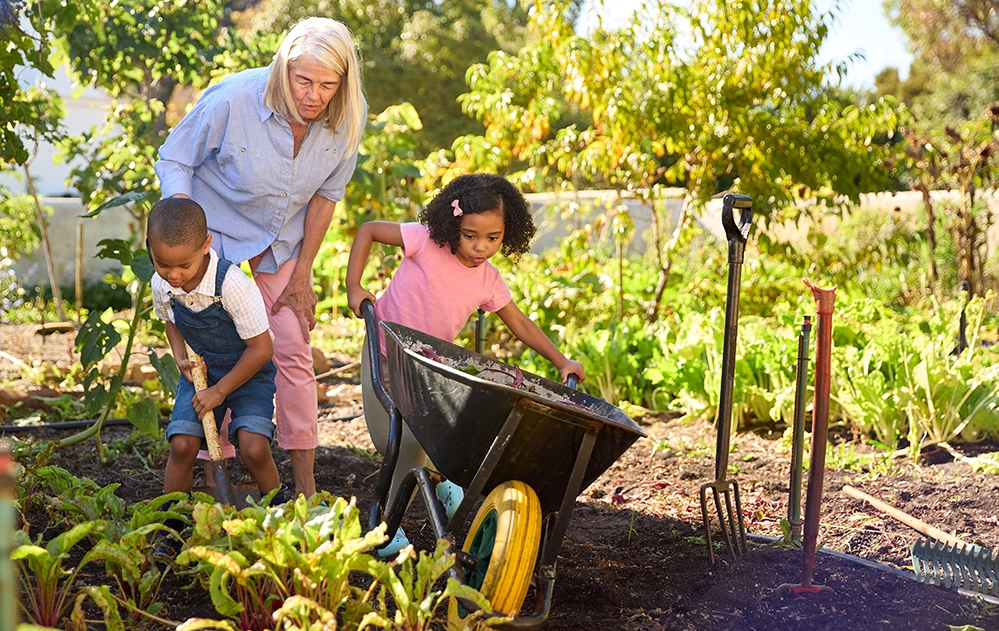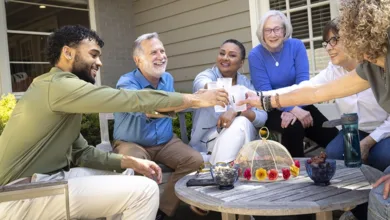
One of the greatest legacies we can leave our children and grandchildren isn’t money or possessions—it’s a healthier planet. With climate change presenting the biggest challenge future generations will face, living more sustainably today directly impacts their tomorrow.
The good news? Living greener is easier and more affordable than you might think. Small, intentional changes in your daily routine can significantly reduce your environmental footprint while often saving money. These 14 simple steps show that sustainable living doesn’t require drastic lifestyle changes—just mindful choices that add up to meaningful impact.

Energy efficiency: Simple changes, big impact
1. Turn off electronics when they are not in use
Leaving electronics on standby wastes a lot of energy and increases your electricity bill. Make it a habit to fully turn off TVs, computers, and gaming systems when you’re done using them.
2. Switch to energy-efficient appliances
When it’s time to replace appliances, choose ENERGY STAR certified models. These appliances help lower utility bills and reduce energy consumption by up to 50% compared to standard models.
3. Replace bulbs with LEDs
LED light bulbs last 25 times longer than traditional bulbs and use 75% less energy. Although the initial cost is higher, you’ll save money over time through reduced replacement and energy expenses.
4. Use your microwave more often
Microwaves are much more energy-efficient than traditional ovens, using about 50% less energy to heat food. They are perfect for reheating leftovers and cooking small portions.
5. Insulate your home properly
Proper insulation keeps your home comfortable year-round while reducing heating and cooling costs. Focus on attics, basements, and around windows and doors for the best results.

Sustainable shopping and consumption
6. Cut down on plastic use
- Use reusable canvas bags when shopping.
- Select fruits and vegetables that are not in plastic packaging. – saying choose a lot
- Bring a refillable water bottle instead of purchasing bottled water.
- Opt for glass or metal containers when possible.
7. Buy better, not more clothes
Fast fashion generates enormous environmental waste globally, with 92 million tons ending up in landfills each year. Instead, focus on buying quality clothing that lasts longer. Shop secondhand when you can and properly care for your clothes through correct washing and storage.
8. Support local businesses
Buying local reduces transportation emissions while supporting your community’s economy. Look for farmers markets, local craftspeople, and region-specific products.

Home and personal care
9. Choose green cleaning products
Replace chemical cleaners with natural alternatives like white vinegar, baking soda, and lemons. These traditional remedies our grandmothers used are safer for your family and the environment.
10. Avoid products with microbeads
Check labels on body washes, toothpaste, and face scrubs for microbeads—tiny pieces of non-biodegradable plastic that contaminate water sources and enter our food chain.
11. Fix instead of replacing
Before tossing something away, think about whether it can be fixed. This simple practice keeps items out of landfills and saves money. From mending clothes to fixing small appliances, choosing repair over replacement is a smart and eco-friendly choice.
Lifestyle changes for long-term impact
12. Eat less meat
Meat production has a bigger carbon footprint than grains and vegetables. Try cutting back on meat by just two meals a week—your wallet and the planet will thank you.
13. Plant trees
Help reforestation efforts by planting trees in your yard or supporting organizations that plant trees worldwide. Trees absorb carbon dioxide and offer essential environmental benefits.
14. Fly less whenever possible
Air travel has a large carbon footprint. Choose ground transportation for short trips or combine several destinations into one trip to reduce the number of flights.
Why living greener matters more than ever
Climate change affects every aspect of our grandchildren’s future—from the air they breathe to the food they eat. By making sustainable choices today, we’re not just reducing our environmental footprint; we’re setting an example for behaviors that future generations can follow.
Every small action grows when embraced by millions. Your choice to live more sustainably inspires family, friends, and community members to make similar changes, creating a ripple effect that benefits the environment.
Getting started: Your green living action plan
Week 1: Focus on energy efficiency—switch to LEDs and unplug electronics.
Week 2: Reduce plastic use with reusable bags and water bottles.
Week 3: Use natural cleaning products and fix things instead of throwing them away.
Week 4: Make a small dietary change and support a local business.

Frequently asked questions about green living
Q: Is living greener really more expensive?
A: Many green practices actually save money in the long run. LED bulbs, energy-efficient appliances, and repairing items instead of replacing them help reduce costs over time.
Q: How much impact can one person have by going green?
A: Individual actions are important, especially when they spread through communities. Also, your choices influence those around you, like family and friends, which increases your overall impact.
Q: What’s the most essential green change I can make?
A: Focus on energy efficiency at home—it provides immediate savings and environmental benefits while encouraging further changes.
Q: How can I get my family interested in greener living?
A: Emphasize the benefits they value most: saving money, improving health, and creating a better future for children and grandchildren.
Additional resources for sustainable living
For more ideas and support on your green living journey, explore these trusted organizations:
- Environmental Defense Fund (www.edf.org) — Science-based environmental solutions
- Green America (www.greenamerica.org) — Economic strategies for environmental and social justice.
- Natural Resources Defense Council (www.nrdc.org) — Environmental advocacy and education
- Fashion Revolution (www.fashionrevolution.org) — Sustainable fashion movement
- Native American Traditional Food Systems (www.natifs.org) — Indigenous approaches to sustainable living
Ready to explore sustainable living more deeply? See how Depression-era practices can inspire modern environmental decisions in How My Depression-Era Parents Taught Me Sustainable Living.






